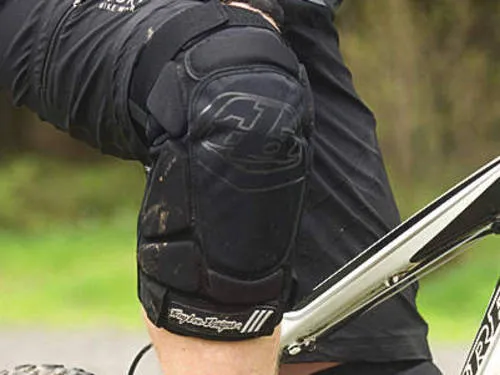Everyone wants to ride faster – the faster you go, the more fun you have. But speed without control is likely to result in you and your steed parting company. Here we show you how to build that control and use it to achieve speeds you’ve only dreamt of…
We’re not just talking about the physical control you need to handle the bike, but also the mental control required to stay calm and focused on the trail ahead.
Comfort braking vs control
The first thing you need to do is eliminate all ‘comfort braking’ from your riding.
You probably don’t realise how often you gently drag or dab your brakes. It’s an unconscious habit that comes from your need to feel in control as your speed increases. Usually, you drop no more than 1-2mph, which is just enough to upset your body position and flow for no practical benefit.
So find a section of trail that’s relatively straight and session it, gripping the bar with your whole hand to resist the temptation to brake unnecessarily. After a couple of goes this should be a lot easier. Even when you do think you might need to brake, try something else first: look further ahead.
We often grab the brakes when we can’t process the information we’re getting from the trail quickly enough – your brain tells you you’re out of control, even if you are riding well. Looking further ahead gives you a few extra seconds to think about the next bit of trail, and that can be all you need to stay off the stoppers.
Braking with force
If you can brake hard with confidence then you can ride faster into every turn or tricky section of trail that you come across. The key to powerful straight-line braking is to do these three things:
1. Compress your suspension and tyres for maximum traction.
2. Drop your centre of gravity as your body pushes into the bike.
3. Find the maximum braking force you can use before the wheels lock.
As you ride along, standing up with your cranks level and your weight centred, drop your heels and thrust your bodyweight down through your feet as you squeeze both brake levers. The downward force will flatten the tyres and compress the suspension, giving extra grip and allowing you to brake harder before the wheels lock up.
By dropping your heels you’ll maintain a good body position as the bike decelerates hard – absorbing forces through the bottom bracket rather than through the handlebars.
Practise this with each brake separately on a flat dirt or gravel track, then combine the two. This will let you see how much force you can put through each brake before you skid. In a straight line, your stopping force comes mostly from the front brake, so good footwork is essential if you want to stay balanced.
Cornering in control
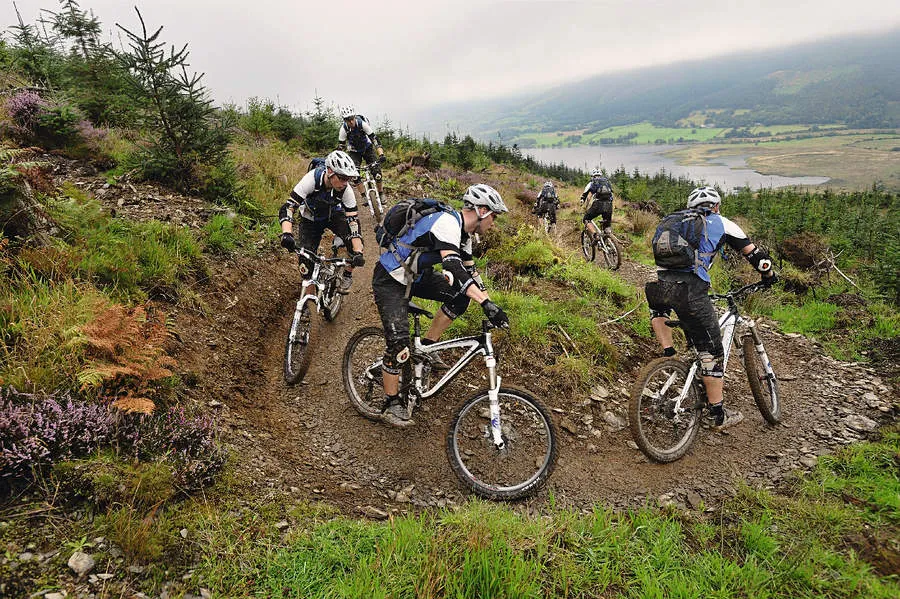
Good technique and control are paramount on bends like this
Stay off the brakes in the turn
You corner best when you lean your bike into a turn.
On a mountain bike you have a low top tube so you can lean the bike more than your body, dropping your outside foot to the bottom of the stroke as you stand up and over the outside of your bike. This lean creates a bigger contact patch of tyre on the trail and means you can turn the bars less, reducing the chance that your front wheel will either dig in or slip out.
If you brake during a turn you’ll cause the bike to become more upright. As the bike decelerates, your body keeps going in a straight line.
This means you’re pushing towards the outside of the turn, and this pressure goes through your outside hand into the bars, and makes the bike stand up. You’ll immediately ‘fall out’ of the turn. This is why many riders feel like they can’t hold some turns – it’s caused by them dabbing the brakes partway through.
To break the habit, find a good corner and work on braking hard in the approach then rolling through at walking pace.
Get a grip on the bars so you aren’t tempted to touch the brakes, and work on leaning that bike and creating a smooth turn. Now session the corner for a while, trying to get faster but still only braking before the turn starts.
Technique tips for controlled cornering:
- Pick your line: Scan into the corner for the fastest line through; brake hard and late as you enter the turn
- Foot down: The outside foot is down for maximum stability and grip, allowing for a quick turn and minimum risk of pedals catching the ground
- Lean into the turn: With the bike leant hard over, the handlebars only need a small amount of turn, allowing the bike to rail through to the exit
- Scan ahead: A smooth, stable turn allows you to exit smoothly and sprint away at speed, focusing far ahead as you scan for the next obstacle
Top tip for controlled cornering: Pad up
Pads are light, inexpensive and easier to ride in than they’ve ever been. So if you’re going to push your limits, protect your bones and joints. Flexible knee and elbow pads like the 661 Evo range are easy to pedal in and keep your knees warm in winter, too.
Climb fast

On technical or long climbs you need good technique to get the best out of your fitness. This means finding a cadence that works for you – one you can spin all the way up a long hill without burning out your muscles. You want to spin at around 70-90 pedal revolutions per minute (rpm) because this ensures you primarily work your slow twitch muscle fibres – these are the ones that are best for endurance.
If you try to climb at lower cadences by pushing harder on the pedals, you’ll start to use your fast twitch muscle fibres. These provide a great deal of power but only in short bursts. Use them too often on longer rides and you’ll find your legs suddenly feel empty of energy and lactic acid builds up – this is bad news, obviously.
Every rider has a different mix of muscle fibres, so everyone finds their own preferred cadence. But don’t confuse what’s become a habit with what’s best. You might be used to pushing a big gear, and going from 45 to 70rpm might seem odd at first, but don’t dismiss it until you’ve tried it for a few weeks.
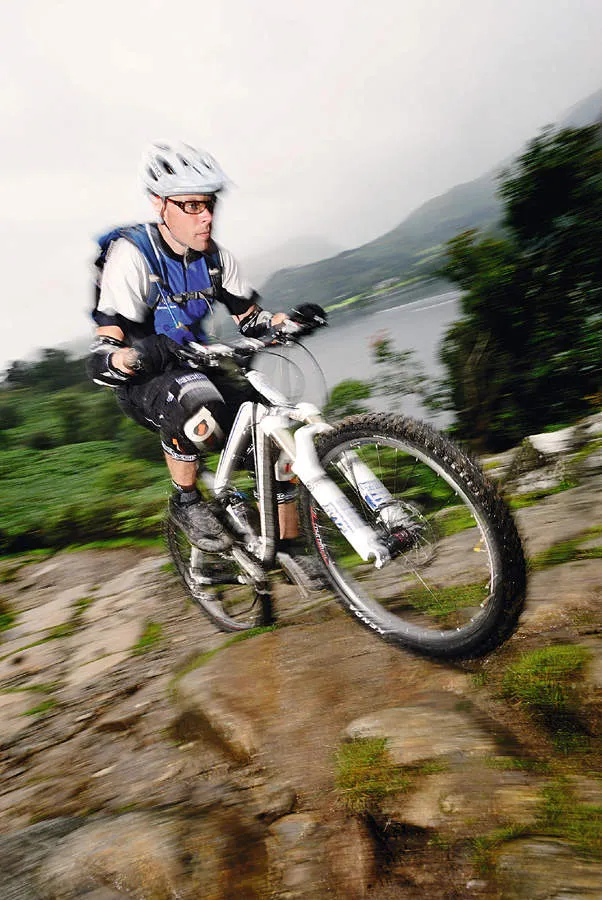
Learn to spin and save the fast twitch muscles for technical sections – to surge through a muddle of roots or over a step-up for example. By spinning at a rate a little slower than many road riders (Lance Armstrong spins at about 120rpm) you leave yourself room for sudden accelerations without the need to change gear.
Technique tips for climbing at speed:
- Look where you're going: Looking well ahead down the trail applies as much going up as coming down, as line choice is still critical.
- Use your arms: Pulling back and down with your arms increases the tension through the bike and the force into the pedals for more efficient climbing.
- Keep on spinning: Spin smooth and fast, maintaining an even pedal stroke, to keep the bike fl owing up technical or wet terrain.
Descending with control
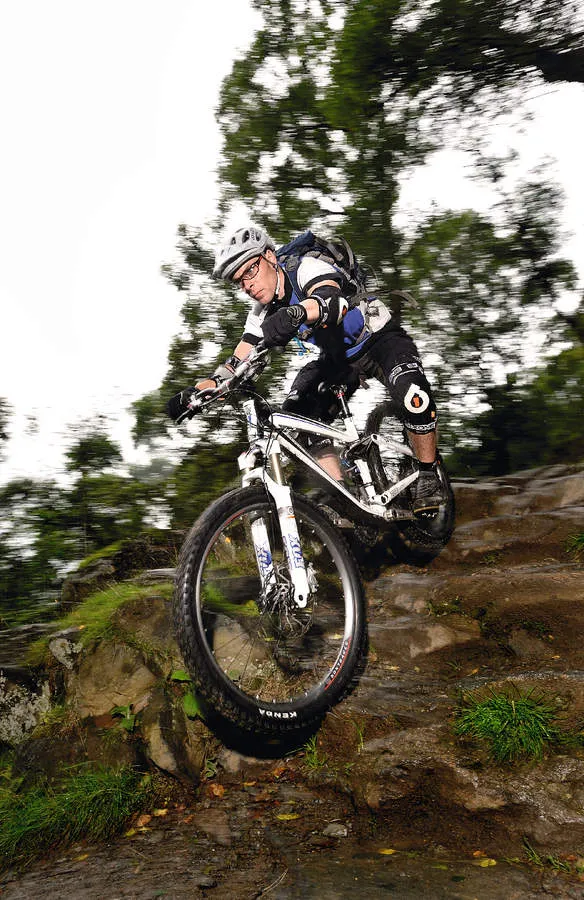
Being able to resist the strong temptation to grab the brakes will improve your downhill ability no end
- Look up: Focus ahead and not down, allowing you to prepare for what’s coming up on the trail and avoid needless braking.
- Stay off the brakes: Fist the bars if you are tempted to dab the brakes, as it’ll make you think about reaching for them.
- Weight back: With good body position you can attack technical sections with greater confi dence and speed.
- Set up for success: Well set-up suspension smooths out the hits and increases grip, allowing higher speeds and greater control.
Top Tip for controlled descending: Clear vision
Riding fast results in trail debris flying into your face more often, and the last thing you want when speeding downhill is a lump of mud blinding you.
Protect yourself by always wearing glasses — clear ones in winter or on night rides. Polish them with wax to avoid misting, and keep them clean so nothing distracts you from the trail as it comes racing towards you.
Riding technical trails at speed

Speed is your friend over tricky terrain where you need to maintain momentum
- Choose your route: Chin up and scan ahead to pick your line through the rocks as early as possible.
- Press on the pedals: A sudden burst of acceleration can give you the momentum needed to power through the rocky sections.
Set-up tips to ensure your brakes and tyres are ready for action
Believe in your brakes
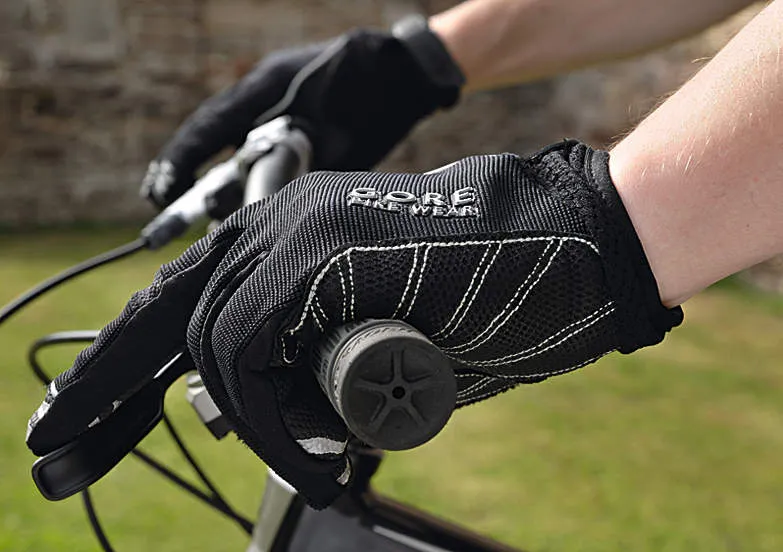
Before you go fast you need to be totally happy with your brakes. This means getting them perfectly set up and knowing how and when they bite.
- First adjust the position on the bar, moving them inboard if you find the factory setting of butted grips means your fingers end up gripping the inside of the lever (or your palm hangs off the edge of the bars when braking — not good for control or the ulna nerve).
- Next, angle them up until you can reach the levers from your natural downhill position, with elbows low and arms flexed — without forcing yourself to roll your body forwards to get your fingers down.
- Finally, adjust lever reach and bite point — if brakes allow — until you are comfortable and confident.
Consider your tyres and traction
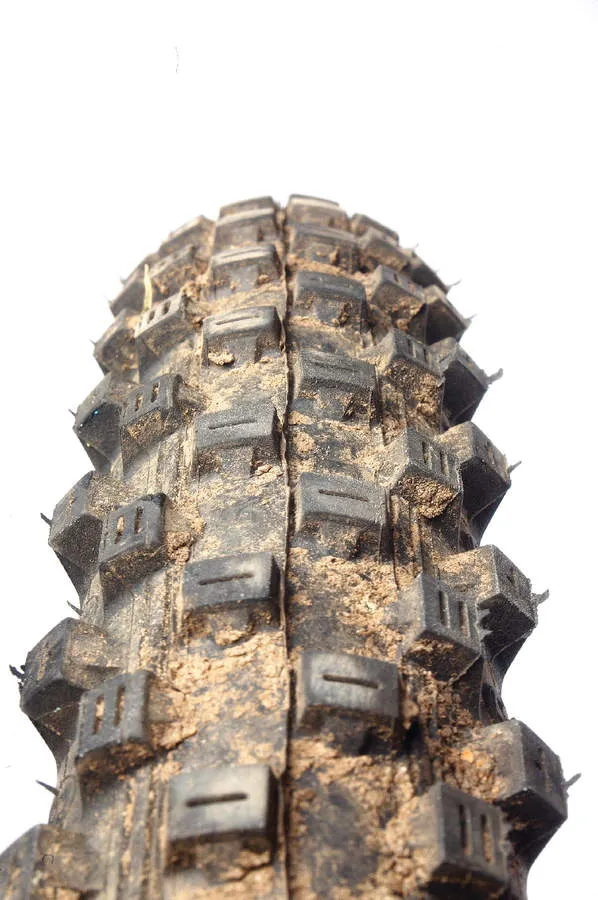
Flying down a slope at 30mph with just two small patches of rubber in contact with the ground is daring enough. But if the rubber is the wrong type, or inflated to the wrong pressure, you could be going from daring to nuts.
Big tyres with reinforced sidewalls and soft compound rubber, run at 30-40psi, give huge grip, provided the tread pattern is right for the ground surface. But that’s a lot of weight so you have to compromise on your XC bike.
Ideally go for big but light treads such as the kevlar-sidewalled Bontrager Jones ACX, which goes up to 2.35 for excellent grip. Or you could try Maxxis High Roller 2.35 Supertacky — very slow on roads and hardpack climbs, but you have awesome grip coming down.
Meet our coaching expert

Chris founded his company, CycleActive, in 1996 and set out to create a professional training and travel operation.
He was the first to employ only qualifi ed, professional instructors and now his team leads the way in delivering skills coaching.
Recently Chris has been working closely with the CTC on its MTB Instruction programme, using fundamental elements of this as part of his feature.
Combined with his own research on vision in mountain biking, his level 4 coach status as an SMBLA tutor, expedition and night riding instructor, this really sets him apart as a coach — making him the perfect author for this What Mountain Bike series.
To find out about coaching or group courses with Chris and his team, visit www.cycleactive.co.uk.
